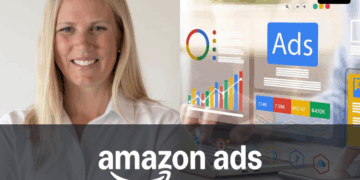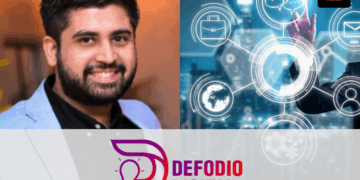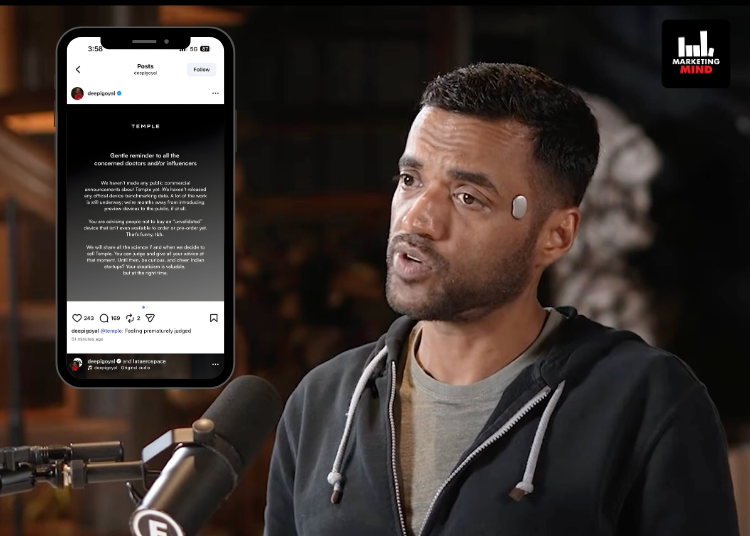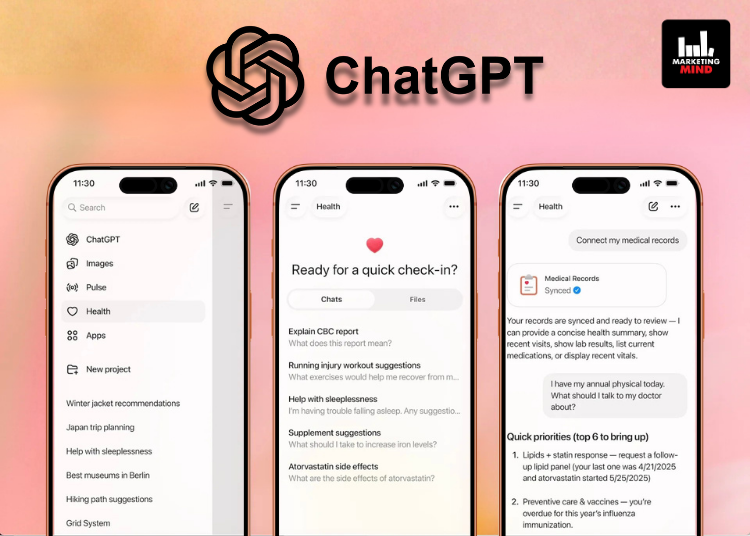As the festive season reaches its peak, shoppers are swept up in a whirlwind of excitement, eagerly searching for the latest products and deals that embody the spirit of celebration. In this dynamic landscape, many brands are seizing the moment by turning to influencer marketing as a powerful tool to engage audiences, transforming everyday consumers into passionate advocates who seamlessly blend entertainment with commerce and create immersive experiences that resonate deeply with their followers, making each scroll a gateway to discovery and purchase.
By harnessing the authenticity of influencers, especially micro and nano-influencers, brands this year are focusing on crafting localised narratives that not only drive sales but also capture the hearts and minds of their target audiences during this vibrant shopping spree.
Brands are now focused on building data-backed partnerships that allow influencers to create shoppable, interactive content. This integration of content and commerce meets consumers right at the intersection of entertainment and shopping, transforming the buying journey into a seamless and engaging experience.
Industry leaders highlighted that with influencer marketing budgets on the rise this festive season, brands are investing in long-term collaborations, particularly in lifestyle, beauty, and fashion categories. This shift to sustained relationships enables brands to cultivate loyalty and maintain consistent visibility throughout the season.
Additionally, the impact of short-form content on platforms like Instagram Reels and YouTube Shorts is growing, with younger audiences, especially Gen Z, engaging more actively. As brands harness these interactive formats, they are creating not just one-off promotions but narratives that evolve over time, echoing consumers’ desire for a more personal connection with the brands they support.
Influencer marketing trends to watch this festive season

Manish Solanki, COO and Co-Founder, TheSmallBigIdea, said that this festive season, brands are increasingly focusing on micro and regional influencers over national ones to engage hyper-local audiences. Unlike previous years, where celebrity influencers dominated, the shift is now toward authentic, data-driven campaigns.
“In the current environment, gut-feeling influencer selection is a thing of the past. Influencers are also becoming sales enablers with shoppable content integrated across platforms, driving both content and commerce. Sustainability and social causes are also key themes, resonating with a younger, value-conscious audience,” he added.

Sahil Chopra, Founder and CEO, iCubesWire, said that one of the trends to keep an eye out for is the rise of nano and micro-influencers.
“Brands are moving away from macro-influencers to small creators, given their higher engagement rates and strong hold on the community. Moreover, short-video content platforms like Instagram Reels and Youtube Shorts are more preferred than ever. Another trend is the use of CGI content since it’s been well-received by the audience on social media platforms,” he added.
Furthermore, he emphasised that brands are significantly increasing their influencer marketing budgets compared to last year.
“Diwali 2023 saw a rise of over 20% in influencer collaborations, with the total budget for influencer campaigns across industries exceeding Rs 500 crore. This surge is due to the growing reliance on social commerce and the proven ROI from influencer-driven campaigns during festive sales,” Chopra added.
Also read: 65% Of Consumers Urge Brands To Collaborate With Vernacular Influencers: iCubesWire
Chopra said that creators are expected to see a 15-25% increase in earnings this festive season.
“Brands’ higher spending, coupled with the increased demand for influencer collaborations, is driving up creator fees. Factors like enhanced engagement rates and proven conversion metrics make influencers more valuable to brands during this period,” he added.

Viren Vesuwala, Lead, Strategic Partnerships and Alliances, White Rivers Media, emphasised that influencer marketing is shaping up as a core strategy this festive season, with brands sharpening their game to engage audiences more effectively. With budgets on the rise, there’s a growing belief in influencers as powerful catalysts for engagement and sales. Performance-driven strategies like affiliate marketing ensure that spending translates into measurable results, while live commerce blends entertainment and shopping for a personalised experience.
“Micro, nano, and regional influencers are taking centre stage, fostering authentic connections and bringing campaigns closer to local cultures. In sectors like beauty and fashion, Gen Z creators dominate platforms such as Instagram with its Reels and YouTube’s Shorts, delivering engaging short-form content. Brands are shifting to long-term collaborations, building lasting narratives that resonate with diverse audiences and embracing inclusivity in messaging,” he said.
Furthermore, he added that data-backed partnerships are enhancing influencer effectiveness, aligning creators with audience preferences. Influencers are diversifying their revenue streams through affiliate programs and live shopping, shifting focus from celebrity endorsements to community-driven connections. Social commerce is transforming retail, with influencers hosting live sessions that make shopping engaging and immediate for younger consumers.
“This festive season unlocks unprecedented earning potential for creators, fueled by increased brand investment and evolving consumer habits. Brands are now viewing influencers as essential partners in driving engagement and conversions, positioning themselves for significant impact during this pivotal shopping season,” Vesuwala added.

Striking a similar tone, Vaibhav Gupta, Co-founder and CPO, KlugKlug, said that the prominent trends this festive season include a stronger focus on micro-influencers due to their higher engagement rates and authenticity.
“There’s also an emphasis on influencer-led storytelling and local language content to resonate with India’s diverse regional audiences. These trends reflect a shift from traditional mega-influencers towards more personalised and relatable content,” he added.
Gupta explained that influencer marketing spending has seen a significant increase, with brands opting for both large and nano influencers to maximise reach while keeping costs efficient. Brands are focusing on micro and nano influencers to lower the cost per reach and improve engagement rates. The categories that are driving the most investment include lifestyle, fashion, and beauty, with an expected increase in spending for sectors like automobile, e-commerce, and FMCG.
Gupta also emphasised that social commerce is becoming central, with influencers integrating seamless shopping experiences directly into their content. Platforms like Instagram and YouTube are leading in this area, where influencers create interactive content that allows viewers to purchase products directly from the posts, enhancing the consumer journey from discovery to purchase.
“Creators are expected to see up to a 40% increase in earnings this festive season. Factors contributing to this growth include increased brand investments in influencer marketing, with a particular focus on micro and nano influencers due to their high engagement rates and cost-effectiveness. The shift towards personalised content and local language strategies is also driving higher demand for these creators during the festive period,” he added.

Shivang Shah, Co-founder at Django, said, “What brands are doing, and what we are building access to at Django is an offering where we identify influencers at an early stage and try to associate with them on a long term basis. Pay the price of today for the influence of tomorrow. Our brand Bergner associated with Vikas Khanna for a 5-year deal when he was just starting to get popular. The ROI on that deal has been insane.”
Furthermore, he added, “If you compare the influencer marketing industry to the US, we are still far away. But I see that as an opportunity. The growth (in creators’ earning) is expected to be 20-25% CAGR which is very high. Influencers should only and only think about providing value, and long term value. Go above and beyond to deliver. If they are able to understand crack that early, they will be in the game for a long time.”
“We have seen a 120% uptick on our influencer division in revenue compared to last year. Brands are also opening up budgets. I have personally seen a massive uptick in the BFSI sector in overall digital spends,” he added.
Key factors driving festive season influencer marketing spending growth
Chopra said, “Rising influencer marketing budgets are driven by a few key factors. The expansion of e-commerce, particularly in tier 2 and 3 cities, has encouraged brands to leverage influencers who can reach these growing markets.”
“Furthermore, the increasing effectiveness of social commerce, where consumers are purchasing directly from social media platforms, has also played a role. The increased consumer trust in influencer recommendations is another factor, with 66% of Diwali shoppers reportedly making buying decisions based on influencer suggestions,” he added.
Gupta explained, “The main factors driving this rise are the desire for higher engagement, authenticity, and the ability to connect with niche audiences. The shift towards personalised and local language content also plays a significant role in increasing marketing budgets, as brands look to make deeper connections with their target consumers.”
Brands are increasingly collaborating with micro and nano influencers who have highly engaged but smaller audiences. These creators often bring more authentic interactions and trust from their communities, which leads to more meaningful connections and better conversion rates for brands, he added.
Shah said that the key factors include the increase in instruments, platforms and eventually changing habits to shop online. The power of influencers to change perspective is high. There may not be as much trackability in all cases but if someone manages to do that, there is no stopping for the creator economy.
Similarly, Solanki emphasised that social commerce, combined with the growing power of micro and nano-influencers, is driving increased spending.
“Consumers are relying more on influencers for product discovery, and brands are leveraging influencers’ ability to deliver engaging, platform-native content. Authenticity and trust are paramount, and the immersive, interactive experiences influencers provide make this season’s campaigns more impactful,” he added.
Influencer categories seeing a surge in engagement and collaboration this festive season
Solanki believes that there are constant shifts in consumer preferences, while fashion and lifestyle influencers continue to dominate the market, several other categories are poised for significant growth in engagement and collaborations.
“We are likely to see a surge in financial influencers, as people seek guidance on how to manage and grow their assets, investments and budgeting. Additionally, categories like food influencers, health and wellness influencers will continue to gain traction as people are prioritising self-care,” he added.
Chopra elaborated that more engagement in categories like fashion, beauty, food, and home decor is expected. Influencers in these niches create content that resonates with the festive vibe, helping brands align their products with the celebratory mood of the season. Influencers focusing on finance and personal care are also seeing growth as consumers are increasingly interested in managing personal finances and wellness during the festive period.
Gupta said, “Engagement is expected to rise notably among influencers in lifestyle, fashion, beauty, and e-commerce categories. These areas tend to have a deep personal connection with consumers, making influencer recommendations particularly effective in driving purchase decisions.”
On the other hand, Shah believes that there’ s no specific category which is expected to see a significant uptick in engagement and collaboration in the near future as every category is here to grow and anyone who is doing something different is here to stay.
Top social media platforms driving influencer campaigns this festive season
Chopra said, “Thanks to their video-first approach, Instagram and YouTube remain the most effective platforms for influencer campaigns this season. Instagram Reels, in particular, offers high engagement rates, while YouTube’s longer format is ideal for detailed product showcases and tutorials. Facebook and WhatsApp are also gaining ground, especially for regional and older audiences.”
According to Solanki, Instagram leads the way with its high engagement rates and features like Reels, Stories, and shoppable posts. YouTube is effective for long-form, immersive content like festive lookbooks and product reviews. Facebook’s broad user base, coupled with its live and group features, helps brands amplify campaigns.
“Although traditionally not considered a core platform for influencer marketing, WhatsApp is becoming increasingly relevant for more personal, peer-to-peer marketing during the festive period. Influencers use WhatsApp to share exclusive deals, product previews, and brand messages with their close networks, fostering deeper trust,” he added.
Similarly, Gupta said that Instagram and YouTube continue to be the most effective platforms for influencer marketing during the festive season, thanks to their high user engagement and extensive features that support content integration with commerce. Other emerging platforms like Sharechat and MOJ are also gaining traction for specific regional marketing efforts.
Furthermore, Gupta stated that brands should measure the success of their influencer marketing campaigns through key metrics such as engagement rates, reach, conversions, and brand awareness. Focusing on data-driven strategies and real-time monitoring is crucial to understanding how well the campaigns resonate with the target audience.
Shah said, “Instagram is the standard one. People spend crazy time, and the habit is only increasing. YouTube is more intent more search based so again a very powerful platform.”
Addressing the challenges brands encounter in influencer marketing during the festive season and exploring strategies to overcome them, Shah said that tracking is the main challenge. Someone needs to make a more efficient tracking mechanism for that.
“Some people don’t have the influence, they just have followers so trying to distinguish between the 2 very early and young creators – very few understand the importance of value creation. Client wins, we all win. That’s something that the influencers need to understand,” he added.
Gupta mentioned that one of the primary challenges during the festive season is finding the right balance between authenticity and commercialization in influencer content. Strategies to overcome these include focusing on long-term relationships with influencers, data-driven selection, and ensuring content aligns with brand values. Brands should also leverage influencer-led storytelling and local language content to create a more genuine connection with the audience.
















